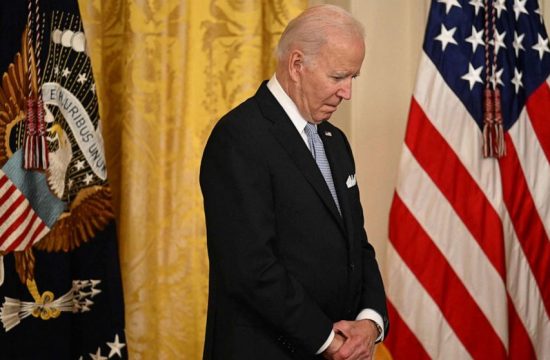While the concept of the debt ceiling might seem “in the weeds,” it actually poses a very real threat to millions of Americans in a precarious economic period.
If lawmakers on Capitol Hill remain deadlocked on raising the debt ceiling, the government could go into default — essentially, unable to pay bills. That would directly impact the wallets of millions of Americans, including those who invest in the stock market and those who benefit from government programs such as Social Security and Medicaid.
“It would be disastrous for the American economy, for global financial markets, and for millions of families and workers whose financial security would be jeopardized by delayed payments,” Treasury Secretary Janet Yellen warned lawmakers in a hearing Tuesday.
Raising the debt ceiling, she said, is “necessary to avert a catastrophic event for our economy.”
But if you’ve ever wondered what exactly the debt ceiling is, you’re not alone. Here’s what it is and some of the real-world impacts it can have.
What is the debt ceiling?
The debt ceiling is a cap on the amount of money the U.S. government can borrow to pay its debts.
Every year, Congress passes a budget that includes government spending on infrastructure, programs such as Social Security and salaries for federal workers. Congress also taxes people to pay for all that spending. But for years, the government has been spending more than it takes in from taxes and other revenue, increasing the federal deficit.
The government needs to borrow money to continue paying out what Congress has already OK’d. The debt ceiling puts a limit on how much money the U.S. government can borrow to pay its bills.
Why should I care about this?
If the government cannot borrow money to continue paying for programs, there will be real-world effects for millions of Americans. Here are some of those potential effects, according to Yellen, the White House and the Committee for a Responsible Federal Budget, a nonpartisan organization.
Moody’s Analytics has estimated that even a long impasse over the debt ceiling could cause the loss of nearly 6 million jobs, increase the unemployment rate to 9% (from 5.2% now) and cause the stock market to lose about a third of its value, wiping out $15 trillion in household wealth.
Would this be worse than a government shutdown?
Yes. This is an even bigger deal than a government shutdown. A government shutdown occurs when Congress does not approve a new spending bill for the next fiscal year, so new payments, such as paychecks, are stopped. In 2019, around 800,000 federal employees were impacted by a government shutdown, and markets dipped.
But the United States has never defaulted on its credit. This would be uncharted territory. The suspension of basically all previously approved government programs, and the ensuing economic shocks, would be unprecedented.
“Many more parties are not paid in a default,” the Committee for a Responsible Federal Budget said. “Without enough money to pay its bills, any of the payments are at risk, including all government spending, mandatory payments, interest on our debt and payments to U.S. bondholders. While a government shutdown would be disruptive, a government default could be disastrous.”
Since the debt ceiling system was instituted in 1917, Congress has never not raised the debt ceiling. Congress has voted 80 times to raise or suspend the debt limit since 1960.
Why are we hitting the debt ceiling?
Technically, we already hit the debt ceiling on Aug. 1. But at that time, the Treasury Department started taking so-called “extraordinary measures” to continue to pay the government’s bills. Basically, there is some accounting and investing sleight of hand going on. But one day, the department will run out of tricks and out of cash. Yellen pegged that date as Oct. 18 in a letter to lawmakers Tuesday.
Right now, the federal debt is at $28.43 trillion, according to the Peter G. Peterson Foundation’s tracker. The current debt ceiling is actually $28.4 trillion — underscoring the pressure Yellen is under to continue paying the bills through “extraordinary measures.”
Does raising the debt ceiling allow the government to spend more?
Nope. Here’s how Yellen put it during a Tuesday hearing on Capitol Hill: “It has nothing to do with future programs of payments, it’s entirely about paying bills that have already been incurred by this Congress, in previous Congresses, and it’s about making good on past commitments — as you said, paying our credit card bill.”
Democrats, who are depending on Republican help to raise the debt ceiling, are frequently reiterating the point that raising the debt ceiling does not authorize new government spending. It only allows the government to borrow money to pay for spending that previous politicians have already OK’d, including former President Donald Trump and then-Senate Majority Leader Mitch McConnell.
But the standoff over the debt ceiling is coming as lawmakers, in an extremely polarized environment, debate passing one of the largest government spending packages in history, Biden’s $3.5 trillion Build Back Better agenda.
The debate about government spending is leading to the politicization of raising the debt ceiling, and the negotiations have become completely intertwined. Republicans insist that if Democrats want to pass such a major spending bill through special budget rules that would require no Republican support, they can raise the debt ceiling on their own, too.
Why do we even have a debt ceiling?
One hundred years ago, Congress used to have to OK every instance of borrowing money — a major inconvenience.
So, in 1917, Congress passed a debt ceiling, which would allow the Treasury Department to borrow money for any approved spending without getting permission from Congress, up to a certain limit. The limit exists to ensure the “power of the purse,” or the ability to determine government spending, stays with the legislative branch, instead of shifting to the Treasury Department.











